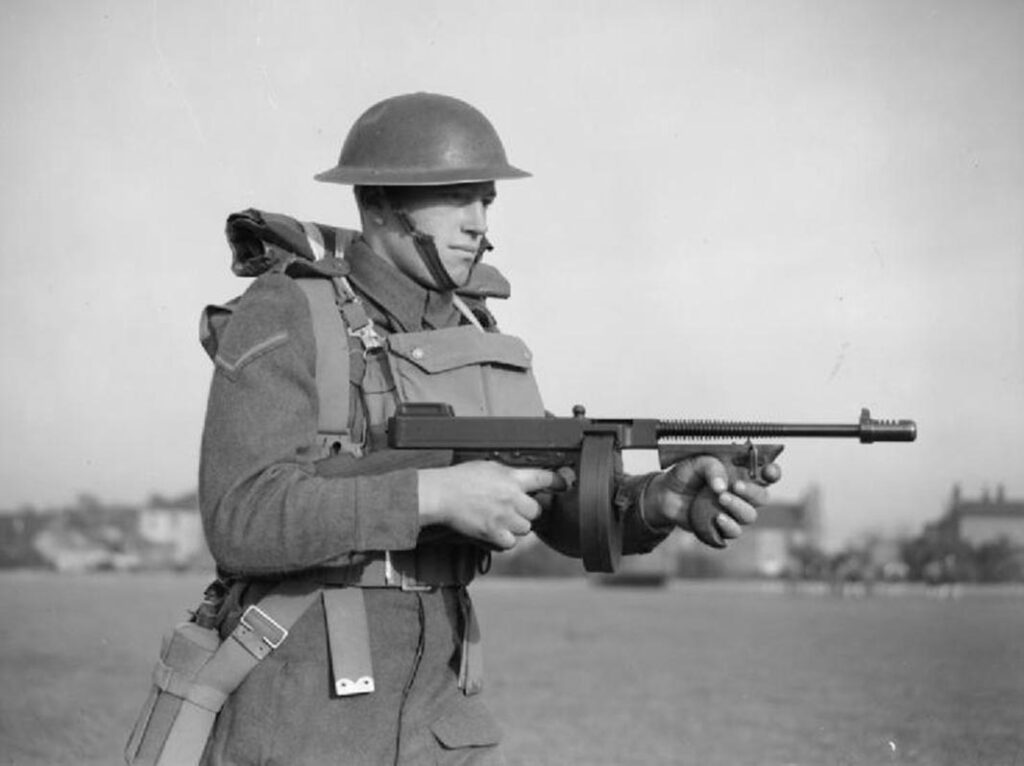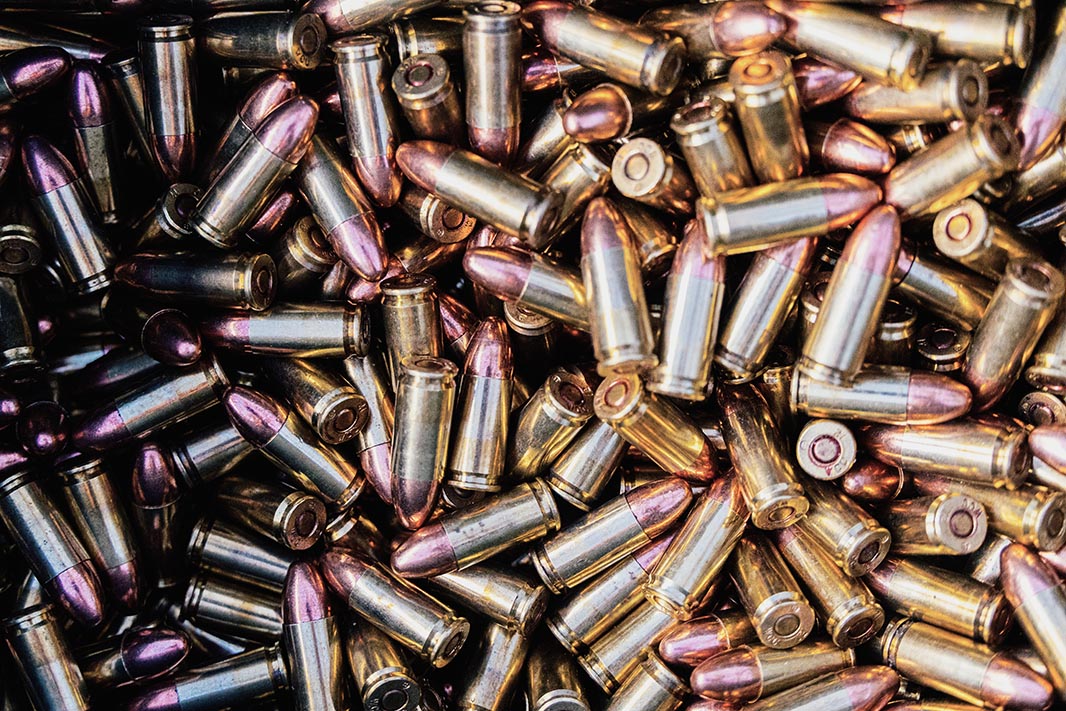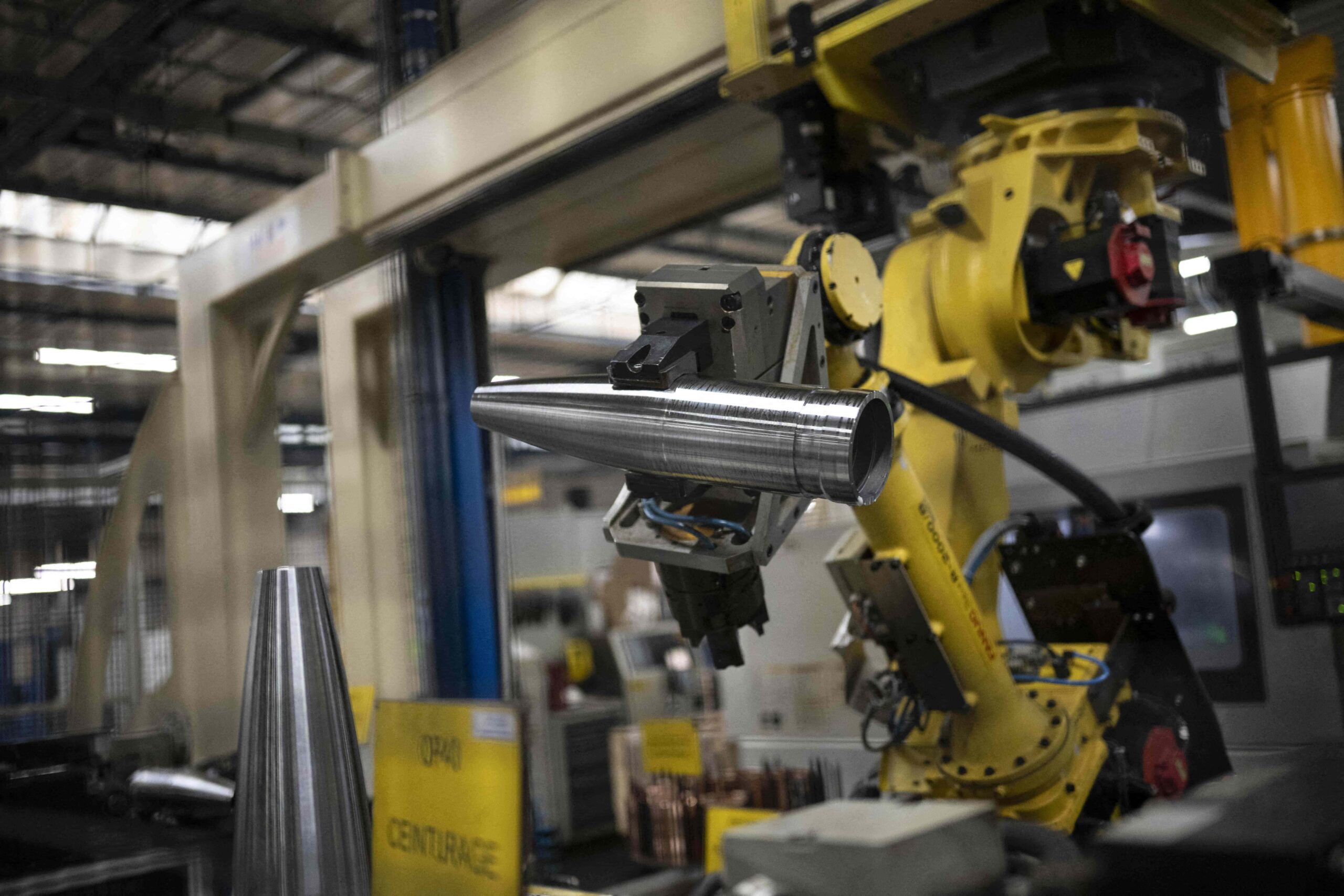Once a crucial frontline personal weapon, submachine guns (SMGs) have endured to this day, adapting to new roles across military, law enforcement, and specialist units. Today, a wide range of modern and legacy designs are continuing to fill the niche where firepower and compactness are still sought-after qualities.
The SMG was once an important part of the infantry weapons mix, though in recent years it has lost this position of importance as circumstances have changed and new weapon requirements have emerged. Indeed, by the 1980s, NATO had come to the conclusion that a new class of weapon known as the personal defence weapon (PDW) was required and that this would essentially replace the SMG. Instead, the PDW era never really gained the necessary momentum, and today what were once considered PDWs and SMGs find themselves in an uneasy coexistence, trying to fill the same niche in the small arms mix.
Examining the SMG’s origins
To understand the current state of play in the SMG marketplace, it is worthwhile looking at how and why the SMG emerged and how it evolved in the initial phase of its existence. The first SMG requirement was generated by the German Army during World War I (1914–1918); what they were looking for was a compact close combat weapon that offered automatic fire, but was controllable, and could be operated in trench warfare conditions. Initially they thought that this requirement could be met by developing their standard service pistols – the Luger P08 and the Mauser C96 – both of which used the Georg Luger designed 9 × 19 mm round. A pistol-based solution proved to be unfeasible, leading to a requirement for a new weapon.
Hugo Schmeisser, working at the Bergmann company, was able to meet the requirement with what became the first true SMG – the MP18. Schmeisser came from a family of small arms designers and later on would go on to develop the 7.92 × 33 mm kurz intermediate round and then for the C.G. Haenel company a series of weapons that saw service from 1942 onwards; the MKb.42(H), the MP.43 and the MP.44, which later became the Sturmgewehr 44 (StG44), the first true assault rifle to be fielded in combat in significant numbers.
The prototype MP18 was a 9 × 19 mm calibre weapon and was initially presented with a 10-round detachable box magazine, this was later replaced by a 20-round variant. However, for the in-service weapon the German Army insisted on the Trommel magazine, often called the ‘Snail Drum’; this was a 32-round magazine developed and built by Gebrüder Bing of Nürnberg, whose primary activity was actually toy manufacturing! The Trommel was originally developed for the Lange Pistole 08, a version of the Luger pistol, with an extended barrel and wooden stock. Post-World War I, the Trommel magazine was dropped and the box magazine became standard. It has been speculated that the MP18 was not the first SMG, with suggestions that Austro-Hungarian or Italian efforts were first, though the MP18 was certainly the first SMG to be used in combat.
Post-1918, the military market for the MP18 dried up, but salvation came in the shape of the police in the Weimar Republic who placed major orders. Today the SMG still has a major presence in the police/law enforcement (LE) marketplace. Schmeisser developed an evolved version of the MP18 for Haenel as the MP28, for use with the German police. The MP28 was also produced under licence in Belgium, and was available in some eight different calibres. The weapon sold well internationally, with China and Spain being major customers.
Further developments
Arguably one of the most significant early SMGs was the Thompson, designed Brigadier General John T. Thompson after his retirement from the US Army. Initially the aim was to develop an automatic rifle; instead, the effort resulted in the M1921 Thompson in .45 ACP (11.43 × 25 mm) calibre. The weapon could be fitted with a 20 or 30-round box magazine or a 50 or 100-round drum magazine. This was followed by the M1928 variant purchased by the US military. The final variant was the simplified M1/M1A1 that appeared in 1942 for the US military. By 1943, the US would introduce the much more affordable M3 SMG, again in .45 ACP – these would eventually be retired in the 1980s, by which time they were only standard issue for armoured vehicle crews.
The fact that the Thompson had become synonymous with the gangsterism of the US Prohibition era in the 1920s, turned the British Army against acquiring the weapon, which they regarded as a ‘gangster gun’ and not the sort of weapon they would use; indeed, they were negative towards SMGs in general. Yet in 1939, they started buying Thompson SMGs, though the only problem was that these were very expensive and could only be purchased using scarce US dollars. There was a British alternative in the form of the Lanchester Mk.1 based on the German MP28, and although the British Army remained uninterested, the Royal Navy purchased the weapon and these remained in service until the 1960s.

Having eventually overcome its phobia of the SMG, the British Army ended up acquiring a very affordable, but not necessarily perfect 9 × 19 mm SMG in the form of the Sten gun. This was a simple weapon that could be produced by any light engineering company, ultimately with millions being manufactured. In the end though, the British Army would acquire a quality SMG via a 1944 requirement for a Sten replacement that was eventually won by a design from George Patchett of the Sterling Armaments Company. While prototype weapons were used in combat in 1944a set of trials was conducted against competing weapons from 1947 onwards. The decision to acquire the L2A1 Sterling was made in 1951 with the weapon entering service from 1953. The Sterling was eventually withdrawn from service in the mid-1990s.
The French Army had taken very limited numbers of an indigenous SMG into service in the early 1920s, but it took another decade until they were serious about an SMG capability. Eventually the MAS 38 was selected, using the French 7.65 × 20 mm round though very few were produced by 1940. Post-1945, a new SMG was required and this saw the MAT 49 in 9 × 19 mm selected in 1949, with first deliveries in 1950. A good weapon, it remained in French service until replaced by the FAMAS 5.56 × 45 mm assault rifle at the end of the 1970s.
While the British and French made slow progress on SMG acquisition, others were far more active. After all, an SMG is hardly the most complex of weapons, although delivering a good SMG is no easy task. Italy had fielded an SMG in 1918, the Beretta M1918 in 9 ×19 mm Glisenti, but it was the Beretta M1938 in 9 ×19 mm from the late 1930s onward that would meet Italian SMG needs and those of export customers for more than 30 years. Hungary would have an SMG in the form of the Kiraly Danuia 39M/43M in 9 ×25 mm Mauser – this would see service in the Hungarian military and a prototype weapon was proposed to the British Army as a suitable SMG design. Another quality SMG was the Suomi M/31 from Finland, once again a 9 ×19 mm weapon, though the primary drawback was its high cost.
Turning to SMGs that have stood the test of time, brings us to consider two systems from the former Soviet Union; the PPSh-41 designed by Shpagin and the PPS-43 designed by Sudaev, with both weapons in 7.62 × 25 Tokarev calibre. Produced in their millions during World War II (1939–1945), these weapons were exported all over the world, with numerous weapons also put into local storage. Many of these were resurrected during the current Russo–Ukrainian War and have returned to combat. Also seen being used is the German MP38 and MP40 9 × 19 mm SMGs designed by Heinrich Vollmer in the 1930s; many of these were captured and then put into store, only to emerge in the current conflict decades later.

Lost position
As previously noted, designing a viable SMG is not the most complex task in the world, as evidenced by the substantial number of countries who have developed this type of weapon. As an example, in South and Central America, Argentina, Brazil, Chile, Mexico and Peru have all had SMG programmes. In Asia, China, Japan and the Republic of Korea and also in Europe, numerous countries have entered the SMG field. Which begs a question – if there are so many SMG designs, why are these weapons not far more widely issued?
Put simply, small arms developments eroded many of the advantages that the SMG had; for example, as previously mentioned regarding the French Army, their need for the MAT 49 SMG was rendered unnecessary with the arrival of the FAMAS, a bullpup configuration 5.56 × 45 mm assault rifle. Despite the fact that they had millions of PPSh-41 and PPS-43 SMGs, the former Soviet Army disposed of them once AK series assault rifles became available. The modern assault rifle, especially its carbine variant, gives the soldier a weapon that is as easy to handle as an SMG, but offers more range and more stopping power.
On the other hand, there are still areas where the SMG has a role to play; for example, it still remains relevant for police/LE applications and for close protection requirements. It also has a place in the special forces weapons mix and in other clandestine operational environments. It equally fits in where a pistol is not enough and a rifle/carbine is too much. Then there is the PDW application, where the rounds utilised by these weapons offer far more performance than the standard 9 × 19 mm round. All things considered, there is still a place for the SMG in the small arms mix.
Available options
Turning to the PDW portion of the SMG first, these weapons were developed to meet a NATO requirement for a system that offered the capability to defeat body armour. This was something that the standard NATO 9 × 19 mm round (STANAG 4090) with a muzzle velocity in the region of 440 m/s and muzzle energy of 774 joules could not easily achieve. Therefore, to meet the NATO PDW requirement a new weapon and a new round were required.
FN Herstal developed the P90 weapon, which had a 50-round magazine for the accompanying new FN 5.7 × 28 mm round (NATO STANAG 4509). The round had a muzzle velocity of 715 m/s and muzzle energy of 511 J. Heckler & Koch (HK) developed the MP7 using their own 4.6 × 30 mm round (NATO STANAG 4820) with a muzzle velocity of 720 m/s and muzzle energy of 520 J. While both the P90 and the MP7 met the NATO PDW requirement, they never evolved into procurement programmes. Subsequently, both weapons have been adopted by special forces, close protection and police/LE users all over the world.

If there is one weapon that defines the modern SMG it is the HK MP5; available in multiple calibres, though 9 × 19 mm is the most common, it has been adopted by users worldwide. It has been produced under license in Greece, Pakistan and Türkiye amongst others, with unlicensed copies being produced in China and elsewhere. By the end of the 1990s, HK had developed an MP5 successor in the form of the UMP, again available in multiple calibres. HK continues to produce the MP5 and the UMP, and it is not unusual to see users operating both weapons in parallel.
With Beretta in the business of making SMGs since 1918, their latest SMG design is the PMX in 9 × 19 mm. Notably, the weapon is fitted with MIL-STD-1913 Picatinny rails, offering the opportunity to add a wide variety of accessories such as an optic. In the US, the SIG Sauer MPX in 9 × 19 mm has been acquired by the US military, as well as by international special forces and police/LE operators. It should also be noted that both China and Russia have developed SMG systems as well.
Czechia has a long track record in the SMG sector with the Skorpion Vz.61 developed at the end of the 1950s. Today, the Colt CZ Group SMG offers the Scorpion EVO3 in 9 × 19 mm, a successful weapon with customers in Africa, the Americas, Asia and the Middle East. After B+T in Thun, Switzerland made a name for themselves by designing and manufacturing suppressors, they then decided to move into weapon manufacture. One of their first projects was an SMG, having acquired the rights to the Steyr TMP, and using this as the basis for their own MP9 SMG. This 9 × 19 mm weapon has made significant sales internationally.

One of the most instantly recognisable SMG designs is the Israel Weapon Industries (IWI) Uzi; designed at the end of the 1940s, the Uzi entered service in the 1950s. The weapon is available in multiple calibres and has been sold to military and police/LE operators around the world, with millions of weapons being produced. The next Uzi variant to be introduced was the Mini Uzi in the 1980s; this was a reduced size variant of the original design. That was followed by the Micro Uzi, which delivered an even greater reduction in size. The Micro Uzi provided the basis for the Uzi Pro, the latest variant of this SMG family. Other Uzi options include a carbine and pistol variants.
The era of the SMG being a standard issue infantry weapon is long gone and yet the SMG still has an important role to play in the global small arms mix. To this day, there is still a proliferation SMG designs that can meet any conceivable requirement from special forces, general military and police/LE users. The only certainty is that the SMG has a long life ahead of it, primarily because the best designs remain both simple and effective.
David Saw


